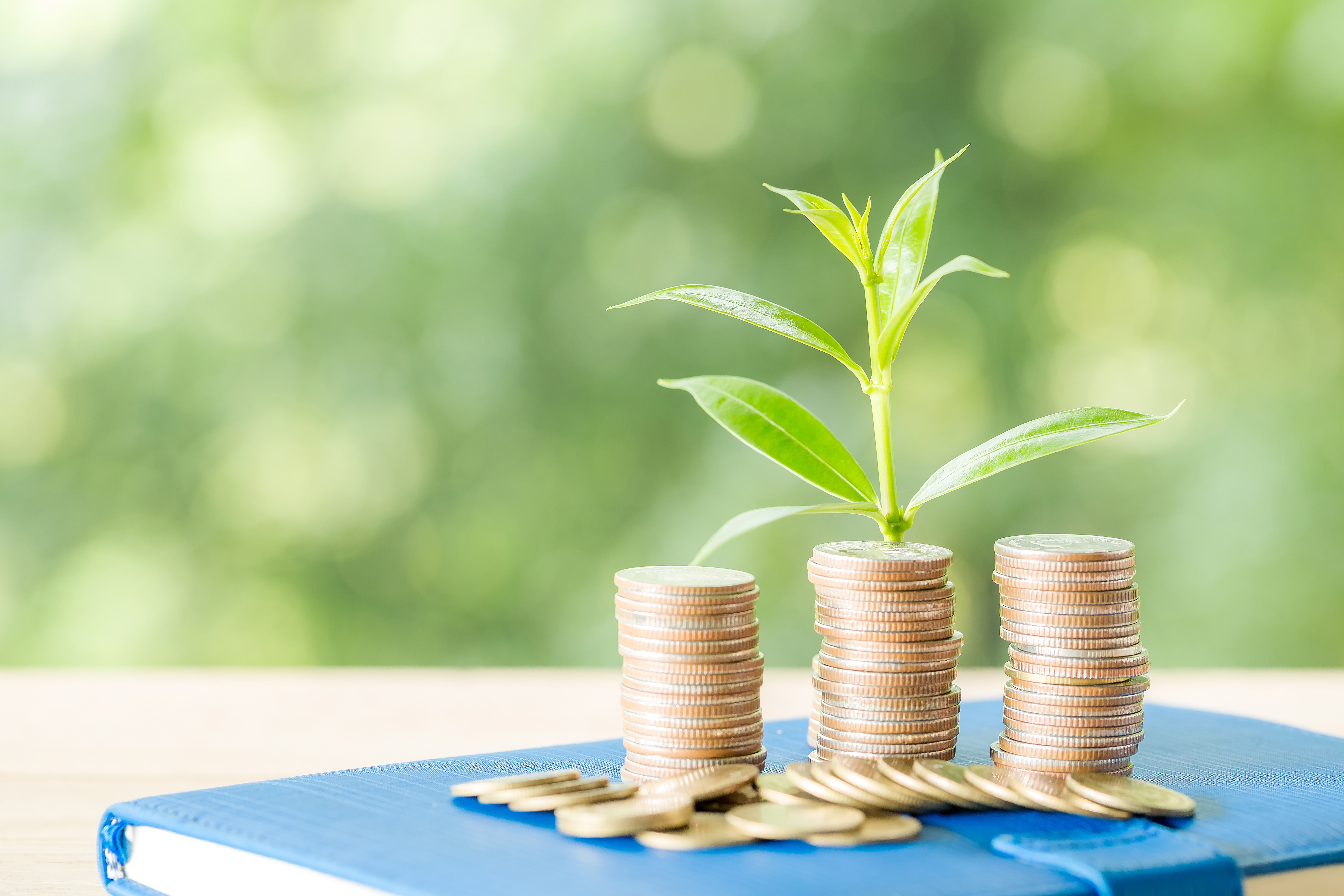Both COVID-19 and climate change have exposed the human society to global, systemic and complex crises that are disrupting all aspects of our life, prompting us to carry out relevant scientific research, take effective actions to mitigate and respond to the disturbances as well as the serious impacts on vulnerable groups. As COVID-19 was wreaking havoc around the globe, greenhouse gas emissions experienced a significant drop, revealing an opportunity for us to fix such intricate system - increasing our resilience to both the pandemic and climate change, which could only be achieved with green recovery measures[1].

Fig 1: Global greenhouse gas emissions Credit: International Energy Agency (IEA)
Since the beginning of 2020, COVID-19 has been spreading around the world. While the risks to public health, in particular in densely populated areas, was most disconcerting, the pandemic also disrupted global manufacturing and logistics, but at the same time leading to reduced air pollution and greenhouse gas emissions. Some researchers have followed hundreds of peer-reviewed literatures[2] published since 2020 and tried to link air pollution or carbon emission levels with human health and the ecological system under the pandemic. However, they opine that it is no easy task to conclude whether the pandemic had a mitigating effect on air pollution and climate change. Such a connection would require studies not only on the infectivity and the virulence of the virus, the atmosphere and the climate system itself, but also emission technologies, meteorological conditions, economic trends, social system and governance effectiveness.
Extended Observation still Needed for Scientific Research amidst COVID-19 before Reaching a Conclusion
Understandably, the drop of air pollutants, as a result of reduced transportation and logistical activities, social distancing restrictions, and lockdowns enforced by governments during the outbreak of COVID-19, directly contributed to a fall of global carbon emissions in 2020 by 5.2% compared to 2019. Some academics have consolidated data on the electricity market, health, and transportation and logistics, and suggested a close correlation between reduction in electricity consumption and the number of COVID-19 cases, social distancing measures and levels of business activity in the United States[3]. Even taking that into account, the relevant scientific research so far has only dealt with environmental, human and technical aspects, with less emphasis on political system and policies, such as the impact of lockdowns, which are more difficult to quantify. Similar to many studies on the effects of COVID-19 and air pollution on health, many literatures link weather and climate factors to the spread of COVID-19, yet without considering relevant non-environmental factors, including policies, social systems and technological innovations, etc.
In addition, relevant scientific studies should take into account both short-term and long-term factors that evolve over time. Ever since the outbreak, the pandemic trend varies on a weekly basis as the infection rate changes and policies are adjusted. It also shifted institutional and policy responses, including measures to mitigate, accommodate and assess feedback on climate change which has in turn affected carbon emissions and the climate. Many people focus on quantifying short-term impacts with very little quantitative data on social responses. Moreover, most such analyses are forward-looking. As a result, the potential for long-term data collection and analyses will be enormous as the pandemic and its impact lingers on.
Carbon emissions have also been reverted back to the increasing trend after the lifting of lockdown and social distancing measures across the globe. By 2021, global carbon emissions had already risen to pre-pandemic levels[4]. It is clear that the reduction in carbon emissions in 2020 is far from making a long-term impact on the global climate. Even in the midst of the pandemic, the effect of climate change never ceases, with disasters like raging wildfires and floods occurring around the globe. Furthermore, the spread of the virus was also affected by the weather, temperature and human behaviour. We believe scientific research is playing a more significant role than just technological innovation. That is to say there is a need to investigate the symbiotic interaction between climate change and carbon emissions in the midst of a pandemic. Nevertheless, we could not wait until there is a general conclusion on the matter before taking effective policy responses.
Climate Change Continues amidst COVID-19 and Mitigation Measures Should be Accelerated
In other words, more researches on the correlation between global climate change and the impact of COVID-19 are required. Currently there has been no observable relief of climate change due to the pandemic. Instead, the world will be spending trillions of dollars a year to put forward various post-pandemic recovery measures. However, thus far only around 2% of annual public expenditure is spent on clean energy and climate change adaptation[5], and the obligations to invest in renewable energy have yet to be fulfilled. The most common renewable energy sources include solar, wind and geothermal energy as well as small-scale hydropower and they are the most direct ways of replacing fossil fuels and reducing carbon emissions because the energy they produce does not come with carbon emissions. More and more advanced economies are moving away from fossil fuels and going towards renewable energy sources. The International Energy Agency warned that the currently observed post-pandemic recovery is unsustainable and that they also forecasted global carbon emissions will surge to all-time high by 2023. The world must expedite its energy transition[6].
Solar radiation, also known as electromagnetic radiation, is the light emitted by the sun. Solar technology captures this form of radiation and transforms it into useful energy. As for the photovoltaic panels we commonly see, they work by converting sunlight into electricity through photovoltaic materials and devices. A single photovoltaic device is known as a cell, which is typically small and produces 1 to 2 watts of power. To increase the power output, the photovoltaic cells are connected in chains to form larger units called modules or panels. Modules can be used individually, or in combination to form an array. When one or more arrays are joined to the grid, they become part of the photovoltaic system. Because of the modular structure, they can fulfil practically any power requirement, regardless of size. CarbonCare InnoLab (CCIL) encourages non-profit organisations in Hong Kong to install solar panels, a practice that directly lowers the demand on power plants. For example, as of March 2021, CCIL's 10 "Solar Energy Caring Partners" organisations had built a total of 2,209 solar panels with a total installed capacity of 870,000 kW and an expected annual capacity of 930,000 kWh, reducing carbon emissions by about 580,000 kg per year. (Source: Office of Energy Efficiency and Renewable Energy, US Department of Energy https://www.energy.gov/eere/renewable-energy, and CarbonCare InnoLab)
Wind energy is the process of generating mechanical power or electricity using wind. Wind turbines transform wind energy into electricity by harnessing the aerodynamic force generated by the rotor blades, whose mechanism is similar to that of an aeroplane wing or a helicopter rotor blade. As the wind passes through the blade, the air pressure on one side of the blade decreases. The difference in air pressure between both sides of the blade thus creates lift and resistance. The rotor spins when the lift exceeds the resistance. The rotor is connected directly to the generator, or by a shaft and a set of gears (gearboxes), which accelerate the rotation. The aerodynamic force is transformed into generator rotation, which then produces electrical energy. (Source: Office of Energy Efficiency and Renewable Energy, US Department of Energy)
Geothermal resources are hot water reservoirs at different temperatures and depths underneath the earth surface. Steam and very hot water can be drawn through a well drilled one mile or deeper to an underground reservoir. The steam and hot water are carried to the ground for a variety of uses including power generation, direct use, and heating and cooling. (Source: Office of Energy Efficiency and Renewable Energy, U.S. Department of Energy)
Hydroelectric power is the generation of electricity using water. Hydro power plants are usually located near water sources. The amount of energy extracted from running water is dependent on both the volume of water flowing and the elevation difference from one location to another. The larger the flow rate, the stronger the hydraulic head, and thus the more electricity generated. At the power plant level, water flows through a pipe (also known as a penstock) and then pushes the blades of the turbines. The turbines then spin the generators, eventually generating electricity. (Source: Office of Energy Efficiency and Renewable Energy, US Department of Energy)
So, is Hong Kong's economic recovery green? What should be included in the green recovery in Hong Kong? How can the public sector, the private sector and the community come together to drive green recovery? CCIL’s Paris Watch Project published in September 2021 a special report titled Seeking Silver Lining – a post-pandemic strategy to meet Hong Kong’s net-zero emissions targets[7], presenting some important trends and policy recommendations for Hong Kong’s green recovery after COVID-19.
Hong Kong is one of the founding members of the international organisation C40 Cities Climate Leadership Group. WONG Kam-sing, Secretary for the Environment of the Hong Kong Special Administrative Region (HKSAR) Government, has been involved in the formulation and the proposition of the following six appeals[8] to the C40 city leaders for a green and just recovery agenda:
- The only stimulus should be green stimulus;
- Commit to an equitable and inclusive recovery;
- Protect and champion mass transit;
- Prioritise and invest in clean energy;
- Invest in resilient cities as the engines of the recovery;
- End all public investments in fossil fuels.
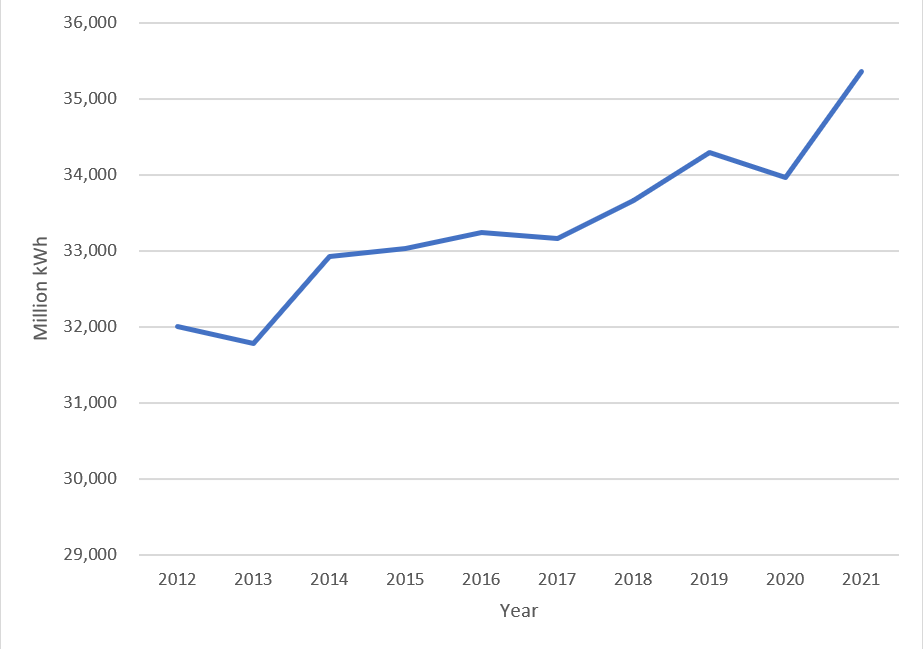
Fig 2: Electricity sales in Hong Kong by CLP Credit: CLP Annual Report
Energy and Power Generation Industries Must Have a Firm Grip on the Supply Chain Change and Foster Green Recovery
The energy generation industry accounts for about 70% of Hong Kong's total carbon emissions[9]. Under the outbreak of COVID-19, Hong Kong's electricity consumption recorded only a slight drop by 1.6% in 2020 over 2019, while in 2021, sales of electricity by the two providers in Hong Kong surged by 3.7% - two percentage points higher than in 2019 before the pandemic. According to the latest data on sales of electricity released by the two power firms, with commercial electricity at only 2.3% lower than the pre-pandemic level in 2019, consumption almost recovered in 2021, whereas the annual residential electricity sales rose by 9.6% in 2021 compared to 2019, more than five times higher than the average annual increase rate of 1.5% over the past 10 years[10]. With these figures alone, we are not able to rush to a conclusion that the pandemic did not really reduce commercial electricity use, conversely, working from home has significantly increased residential electricity demand. We will need further observation on that front. In addition, the Government’s electricity subsidies provided to industrial, commercial and residential users over the years may not be conducive to the drive to save electricity. Even so, for the energy generation industry in Hong Kong, these trends mean that we cannot reduce carbon emissions by simply encouraging users to be prudent. Instead, we must take a multi-pronged approach that includes switching to renewable energy, enhancing energy efficiency, and promoting long-term carbon reduction.
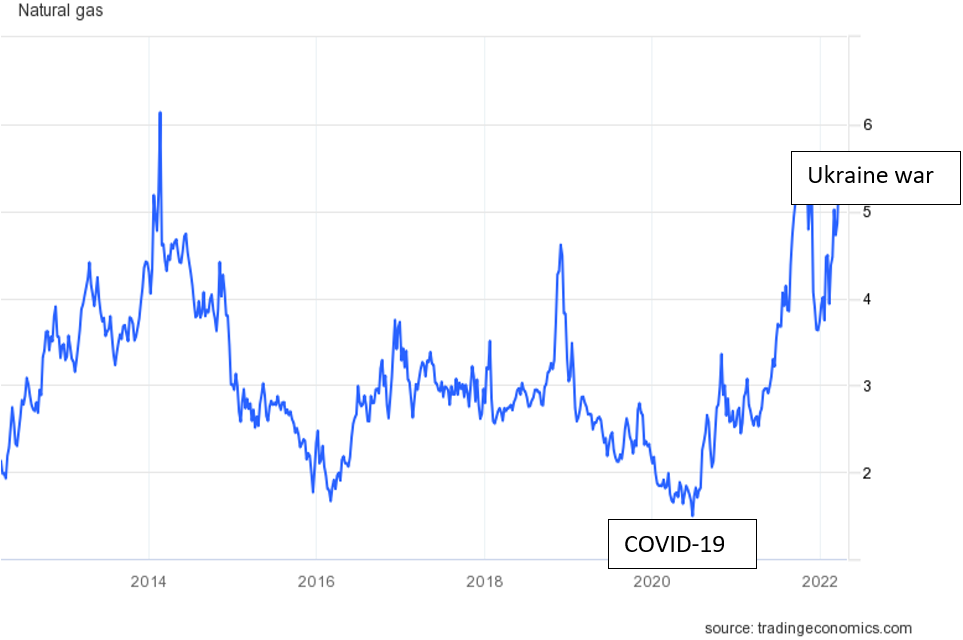
Fig 3: US Natural Gas Futures Price
Looking at the price trend of fossil fuels and commodities throughout the pandemic, we can see a general decline in the cost of fossil fuels, which is caused primarily by market concerns over future economic growth. On the other hand, we see a price growth in monocrystalline or polysilicon, which are needed for building photovoltaic panels, due to global supply chain disruption and shortage of reserves. As the world is gradually lifting restrictions on international tourism and pandemic prevention measures, the problem with insufficient reserve will soon subside. However, the global economy entering an inflation cycle and heightening geopolitical tensions have once again become two major factors dominating energy prices. Since the war in Ukraine broke out in early 2022, gas and coal prices once again skyrocketed. European countries are vying to rid their reliance on Russian gas supply[11]. In addition, the heightening of geopolitical tensions, even before or during the pandemic, have been forcing the world to take seriously the risk of excessive reliance on globalised supply chains. Countries have started stockpiling metal resources domestically or persuaded other parties in their coalitions to build supply chain alliances[12]. These changes in the global supply chain landscape are destined to impact on the future of fossil fuels and renewable energy.
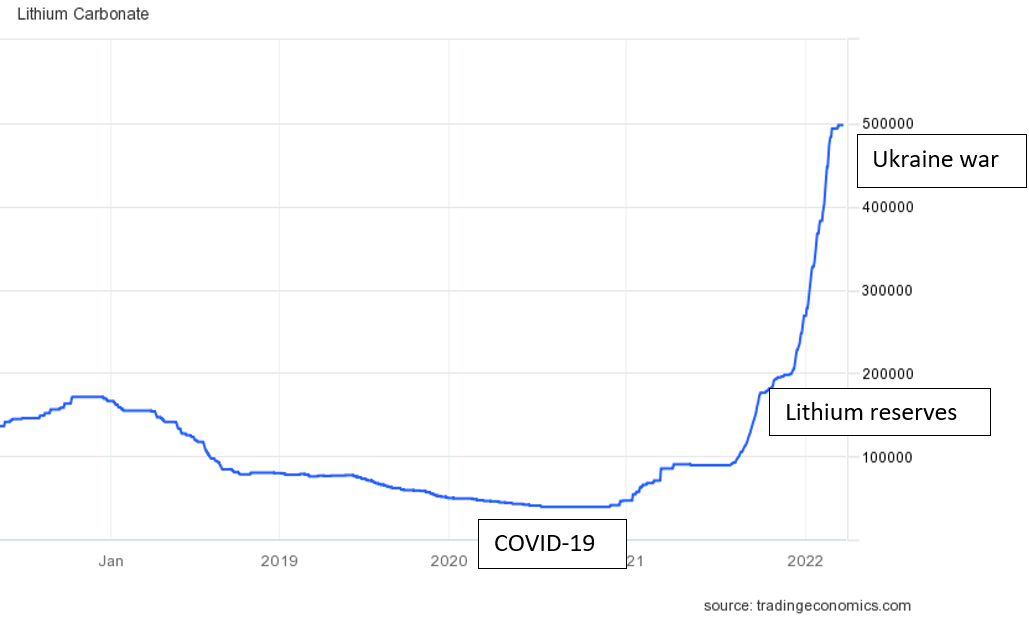
Fig 4: Lithium carbonate futures price
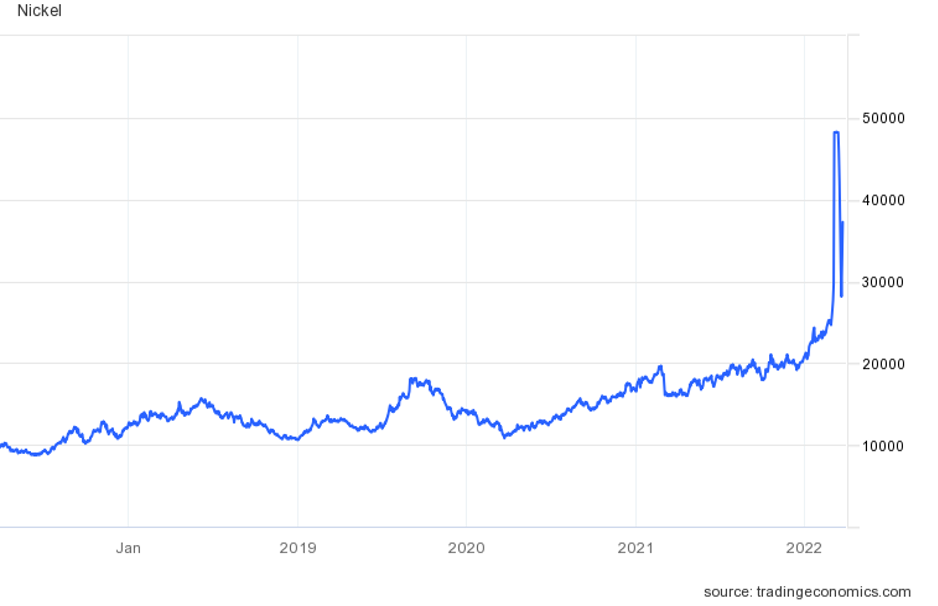
Fig 5: Nickel futures price trend
How will the global supply chain disruption in turn impact Hong Kong's renewable energy development? The HKSAR Government set out in the Climate Action Plan the objectives to achieve carbon neutrality by 2050, and transition to renewable energy at 7.5-10% by 2035 and 15% by 2050. With these goals ahead, it will be crucial for the two power companies and other energy providers to adapt to the change in the supply chain landscape to reach the targets. With an enormous reserve of crystalline silicon in the Mainland and their proven wind power technology[13], we believe the development of the two new power sources in Hong Kong should not be overly susceptible to the supply chain disruption. The only concerns are market prices, and possible fluctuations in logistics and pressure on the inventories under the pandemic. In September 2021, the China Light and Power Group, one of the local providers, announced their goal of achieving net-zero emissions by 2050 - a commendable commitment[14]. This is in addition to the 2021 Policy Address' call for the two power companies to end all coal-fired generation activities by 2035. We look forward to witnessing the way the two power companies and other energy companies implement a solid plan to retire coal plants, as well as a roadmap for transition to renewable energy and relevant investment plans.
Green Recovery in Transportation Industry
Secondly, transportation is another major source of carbon emissions in Hong Kong, accounting for 18% of the total[15]. The pandemic was able to reduce demand for local transportation for a period of time, as well as depressing the need for gasoline. On the other hand, the recent heightening of geopolitical tensions, and, worse still, the outbreak of war, are further pushing up the prices of crude oil, refined oil, and natural gas, putting countries that have habitual reliance on fossil fuel to higher economic and social risks. The HKSAR Government previously published the Hong Kong Roadmap on Popularisation of Electric Vehicles, together with the 2021 Policy Address, announced the initiatives to promote the development of electric and other new energy public transport and commercial vehicles. Moreover, it would facilitate the use of zero-emission electric vehicles and hydrogen vehicles and provide related charging equipment, with a view to replacing fossil fuel vehicles and reducing the risk of reliance on fossil fuels by the transportation industry in the long run.
During the pandemic, the prices of platinum, palladium, nickel, and other metals required for making lithium and hydrogen fuel cells for electric vehicle batteries were low in general, mainly due to market concerns over a slowdown in future economic growth and reduced demand for relevant products. However, same as prices of fossil fuel, geopolitical tensions also greatly affect the prices of those metals, which will hamper the development of electric vehicles and hydrogen fuel in the short term. While in the medium to long term, the progress will depend on the efforts of countries all over the world to build up their own inventories of related metal, and governments' recovery measures, including technical development support, subsidies, and incentives for related industries, as well as their preparedness for the impact of the pandemic on logistics.
In conclusion, while advancing the development of electric and hydrogen vehicles, we need to come up with other ways to reduce traffic emissions, such as through transport planning, establishing more pedestrian precincts and levying congestion charges in busy regions. These measures will lessen the desire to drive, and hence help lower carbon emissions.
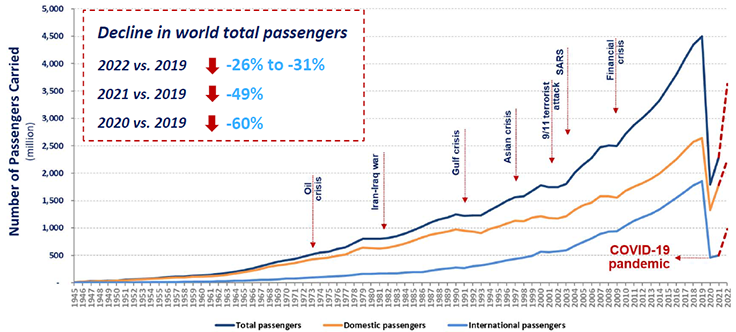
Fig 6: Global air passenger traffic Credit: International Civil Aviation Organisation (ICAO)
As to cross-boundary traffic, international travel has dropped significantly during the pandemic. Many countries closed their borders or did not allow visitors coming from specific countries, while some implemented quarantine measures or testing requirements for visitors. Resumption of international passenger traffic has been slower than expected. Although the international tourism industry grew by 4% in 2021 compared to 2020, with international tourists (including overnight visitors) increased by 15 million, the number of international arrivals was still 72% lower than in 2019, before the pandemic, according to preliminary estimates. 2020 was the worst year recorded for tourism, when international visitors were down by 73%[16]. The aviation industry is also facing unprecedented business restructuring. Yet at the same time, both the tourism and the aviation industries are expecting gradual easing of pandemic prevention restrictions all over the world, leading to continuous rebound in international air traffic in 2022. The carbon footprint and ecological footprint of aviation and tourism industries may therefore see explosive growth, it would be an opportune time to drive a green post-pandemic recovery.
The post-pandemic tourism recovery shall depend largely on how the industry adapts to quarantine measures and testing requirements. On the premise of the slow return of passenger traffic, it might be the right time to re-examine the balance of tourism development with the impact of local carbon emissions and on the ecosystem. The government may consider taking the opportunity to implement progressive air levy, ensuring occasional passengers are free to enjoy air travel or going overseas for family gathering every year, while curbing the desire for frequent business travellers to fly and encourage them to have meetings online instead. The demand for airport expansion should correspondingly be slowed down drastically. For the recovery of tourism, policy makers may consider exploring the potential of ecotourism as a priority by promoting the conservation of green open space and biodiversity in Hong Kong, as well as discouraging lavish consumption behaviour. The Policy Address 2021 also highlights the development of ecotourism, but points out the need in balancing eco-conservation versus tourism, rather than just tapping into huge tourism infrastructure projects in ecologically sensitive areas in order to attract infinite number of tourists, producing tremendous amount of carbon footprint.
Green Recovery in Construction Industry
Buildings account for 90% of Hong Kong's electricity consumption and 60% of its carbon emissions. The energy efficiency aspect of building designs therefore plays a vital role in Hong Kong's progress in reducing carbon emissions. Buildings' capability to achieve net zero emissions will be key to our overall success. As reflected in the data above, electricity consumption of commercial and residential consumers rebounded fully in 2021 as the severity of COVID 19 lessened. Moreover, residential electricity consumption has already gone beyond pre-pandemic levels. The increase in electricity consumption in buildings should not be ignored. The reduction targets for buildings in the government's Climate Action Plan are an important step in curbing carbon emissions, and there is plenty of room for further energy conservation and carbon reduction.
At present, there are two main areas to work on to reduce energy consumption in buildings. For new buildings, it has been a global trend to raise energy efficiency standards, introduce the use of low-carbon building materials, employ low-carbon construction processes, adopt effective waste treatment solutions, promote smart building designs, and install renewable energy facilities. For existing structures, preliminary steps could be energy audits and specific upgrades, which shall help reduce carbon emissions and improve the quality of life and wellbeing of the public. Currently, Electrical and Mechanical Services Department has the Building Energy Code and the Energy Audit Code in place. Individual building developers and owners can also participate in the Building Environmental Assessment Method Plus assessment organised by professional institutions to have the new or existing buildings assessed in the aspects of site, water use, energy use, and waste management. However, these two procedures are voluntary in nature. Some Asian cities, such as Seoul and Tokyo, are offering more incentives to encourage zero energy or green buildings, or even requiring compulsory installation of renewable energy. These are good examples that are worthy of us in Hong Kong drawing reference from.
The Meaning of Green Recovery for Finance, Academic, Innovation and Technology, and the Community
Under the trend of green recovery, Hong Kong's financial and research professionals are welcoming new opportunities and keen to support relevant policies. Apart from the issuance of green bonds, the establishment of the Centre for Green and Sustainable Finance to support green finance in the Guangdong-Hong Kong-Macao Greater Bay Area, and the efforts to coordinate industry stakeholders to research and formulate policies, the HKSAR Government may also build a financial platform for climate change, coordinate project holders, investors, lenders, concessional financing funds, technical and legal advisors to address the supply and demand of green investment projects, and actuate public-private mix financing. Moreover, it is without doubt that Hong Kong is qualified to take on more emission exchange responsibilities, functioning in a similar manner as the China Emissions Exchange in Guangzhou (CEEX), after establishing the carbon pricing system and related trading systems. The proceeds obtained from carbon emissions transactions can be allocated to compensate local traffic and energy expenses to reduce pressure on rate hikes. The surplus can then be used to cover various COVID-19 subsidies and provide funds to cover the rising social welfare expenses after the pandemic. The Policy Address 2021 supports Hong Kong's development as a green financial hub. We hope that the specific measures and plans set out by the HKSAR Government will drive investment and financing activities concerning climate change mitigation and adaptation measures in the region.
In addition, as the world is placing more importance on environmental, social and governance (ESG) reporting trends, both public and private corporations, regardless of their size, should be well prepared for carbon audits and carbon disclosure, and develop a roadmap and make commitments on carbon neutrality. One of the keys to maintaining the competitiveness of the HKSAR as both a Chinese and international financial centre is a swift and assertive response to the global climate crisis. Leading United States and United Kingdom companies have pledged and taken steps to achieve carbon neutrality, while the Mainland has become one of the global leaders in dealing with carbon emissions. It is inevitable for Hong Kong to drive public and private companies to play an important part in carbon disclosure and carbon neutrality.
The academia and the scientific community, especially the medical sector, are working hard on the relationship between COVID-19 and climate change, and have come up with some areas[17], including the synergy of public hygiene in coping with the two issues; the global approach to long-term response and adaptation to them; observation of the interaction of the two issues from the community and the global perspectives; professional organisations' view and responsibility to the matters and the environmental impact. However, there has been no literature discussing the systemic and the structural issues affecting vulnerable groups under the COVID-19 pandemic and how public healthcare and community care should play an important role in responding to the two issues. The launching of relevant scientific research would have long term potential to address them.
Apart from carrying out studies on how Hong Kong can better adapt to the impact of climate change, scientific researchers may also grasp the opportunities to make use of the latest energy and energy efficiency technologies of the world to advance their development and implement local applications. These technologies include hydrogen fuel, electric ferries, energy-efficient air-conditioning, and regional cooling system systems, green fintech, and smart energy systems etc.
The pandemic and extreme weather present new challenges for existing community services, but there are also opportunities for a transformation in equitability. Faced with double threats of COVID-19 and extreme weather, existing community support experienced difficulty in helping vulnerable groups. They will have to go back to basics and improve their ability to prevent and respond to disasters. Service providers are also well-positioned to collect and provide data for researchers and policymakers to conduct in-depth scientific research and develop more efficient climate adaptation policies. The public play a vital part in promoting climate change mitigation and adaptation, as such public education and public engagement are key to fostering the transformation of an equitable society. In terms of how to engage public to get involved in relevant initiatives, the government has an effective role to play.
Government, Business Sector, and Community Working Hand in Hand to Promote Green Recovery
Lastly, we should not forget the important role of the HKSAR Government in facilitating these measures. The post-pandemic green recovery should be placed on the Chief Executive's agenda. Major infrastructure projects, including the Northern Metropolis and the Lantau Tomorrow Vision, have been prioritised in the Policy Address 2021. However, there is no mention of the possible carbon footprints and the potential climate impact risks of the projects. There are commentaries[18] that the Northern Metropolis area will be a potential hotspot for flooding and typhoon disasters. It is predicted that a 2-meter rise in sea level will cause coastal flooding of about 5-6 meters every day and the two main roads to Shenzhen will be flooded, rendering the whole project unlikely to be a green recovery measure.
Under the impact of global warming, the world is experiencing a rise in mean sea level. It is caused by thermal expansion of sea water as well as the land-based ice and snow melting and flowing into the oceans. Globally, the rate of sea level rise since the mid-19th century has noticeably accelerated. With the elevated sea level, the risk of typhoon-generated storm surges affecting Hong Kong will be enhanced. Storm surge is the rise of sea level due to the combined effects of low pressure and high winds associated with a tropical cyclone. When storm surge occurs during astronomical high tides (near New Moon or Full Moon), the resultant sea level can be quite extreme, leading to flooding in low-lying areas. Apart from storm surges induced by tropical cyclones, there exists one other situation which also gives rise to abnormal sea level in Hong Kong. Such events normally occur during autumn or winter around the days of astronomical high tides when the winter monsoon brings strong winds to the south China coastal waters, resulting in appreciable sea level rise. (Source: On sea level rise and abnormal sea level in Hong Kong by LUI Wing-hong, Hong Kong Observatory, April 2018. https://www.hko.gov.hk/en/education/aviation-and-marine/marine/00505-on-sea-level-rise-and-abnormal-sea-level-in-hong-kong.html)
Moreover, as mentioned in the Policy Address 2021, the Chief Executive is presiding over the Steering Committee on Climate Change and Carbon Neutrality, and the Environment Bureau would set up a new Climate Change and Carbon Neutral Office, as well as a dedicated Advisory Committee. We expect the three office and committees will expedite the implementation of climate mitigation and adaptation measures effectively, in particular, assessing disaster risks, strengthening governance, and investing in risk-mitigating and preventive recovery measures. We also hope that the economic recovery measures proposed in the Policy Address 2021 constitute a true green recovery, just as the founding principle of the C40's green and just recovery agenda suggests - every economic recovery measure should be green. It also appeals that in the promotion of C40 city leaders' green and just recovery agenda, green and equitable transformation should be the guiding principle. The HKSAR Government is also responsible for coordinating the promotion of carbon disclosure and neutrality across departments, public organisations and private enterprises and supporting public participation in climate change mitigation and response to climate change-related disasters. These efforts should also be instilled in every policy area.
Further reading:
- Seeking Silver Lining - a post-pandemic strategy to meet Hong Kong’s net-zero emissions targets by John Sayer, Hong Kong: CarbonCare InnoLab, September2021. https://www.ccinnolab.org/uploads/media/pairswatch/paris_watch_special_report_sustainable_recovery_CN_V3.pdf
- Ringsmuth, A.K. et al., "Lessons from COVID-19 for managing transboundary climate risks and building resilience," Climate Risk Management, 35, 2022, 100395. Accessed on 28 March 2022. https://doi.org/10.1016/j.crm.2022.100395
- Selin, N.E., "Lessons from a pandemic for systems-oriented sustainability research," Science Advances, 26 May 2021. Accessed on 28 March 2022. https://doi.org/10.1126/sciadv.abd8988
- Zang, S.M. et al., "The intersection of climate change with the era of COVID-19," Public Health Nursing, 2021, 00, 1-15. Accessed on 28 March 2022. https://doi.org/10.1111/phn.12866
Reference:
- Ringsmuth, A.K. et al., "Lessons from COVID-19 for managing transboundary climate risks and building resilience," Climate Risk Management, 35, 2022, 100395. Accessed on 28 March 2022. https://doi.org/10.1016/j.crm.2022.100395
- Selin, N.E., "Lessons from a pandemic for systems-oriented sustainability research," Science Advances, 26 May 2021. Accessed on 28 March 2022. https://doi.org/10.1126/sciadv.abd8988
- Ruan, G., et al., "A cross-domain approach to analyzing the short-run impact of COVID-19 on the US electricity sector. Joule, 2020, 4, 2322–2337. Accessed on 28 March 2022.
- IEA, "CO2 emissions from energy combustion and industrial processes, 1900-2021," 8 March 2022. Accessed on 28 March 2022. https://www.iea.org/data-and-statistics/charts/co2-emissions-from-energy-combustion-and-industrial-processes-1900-2021
- Reuters, "Pandemic recovery to push emissions to all-time high – IEA," 20 July 2021. Accessed on 28 March 2022. https://www.reuters.com/business/environment/pandemic-recovery-push-emissions-all-time-high-iea-2021-07-20/
- IEA, "Global CO2 emissions rebounded to their highest level in history in 2021," 8 March 2022. Accessed on 28 March 2022. https://www.iea.org/news/global-co2-emissions-rebounded-to-their-highest-level-in-history-in-2021
- 低碳想创坊,《寻觅一线曙光—疫情后香港达成净零排放的策略》,2021年9月(2022年3月28日查阅 )。 https://www.ccinnolab.org/uploads/media/pairswatch/paris_watch_special_report_sustainable_recovery_CN_V3.pdf
- C40 Cities Climate Leadership Group, "C40 Mayors’ Agenda for a Green and Just Recovery," July 2020. Accessed on 28 March 2022. https://www.c40knowledgehub.org/s/article/C40-Mayors-Agenda-for-a-Green-and-Just-Recovery?language=en_US
- 香港特別行政區政府,《香港氣候行動藍圖2050 (第四章) 2021年10月(2022年3月28日查閱 )。 https://www.climateready.gov.hk/files/pdf/CAP2050_4_tc.pdf
- 中華電力有限公司及青山發電有限公司, 十年摘要:管制計劃業務的財務及營運統計 2022年3月28日查閱 )。 https://www.clpgroup.com/content/dam/clp-group/channels/investor/document/3-1/cSOC10yearsSummarychinese.pdf.coredownload.pdf ; 港燈電力投資有限公司, 2021年年報 2022年4月21日查閱)。 https://www.hkelectric.com/en/investor-relations/financial-reports/annual-report-2021
- The Economist, "Weaning Europe off Russian energy will mean making changes," 26 March 2022. Accessed on 28 March 2022. https://www.economist.com/europe/2022/03/26/weaning-europe-off-russian-energy-will-mean-making-changes
- The Hill, "Biden administration announces mineral supply chain push." 22 February 2022. Accessed on 28 March 2022. https://thehill.com/policy/energy-environment/595247-biden-administration-announces-mineral-supply-chain-push; Reuters, "Five Eyes alliance urged to forge ties with Greenland to secure minerals," 4 March 2021. Accessed on 28 March 2022. https://www.reuters.com/business/energy/five-eyes-alliance-urged-forge-ties-with-greenland-secure-minerals-2021-03-04/
- S&P Global, "China's 2021 silicon exports seen up 23% on year, Q1 2022 demand to rise: agency," 29 November 2021. Accessed on 28 March 2022. https://www.spglobal.com/commodity-insights/en/market-insights/latest-news/metals/112921-chinas-2021-silicon-exports-seen-up-23-on-year-q1-2022-demand-to-rise-agency; Global Times, "China’s installed wind power capacity exceeds 300 mln kW, 1.4 times EU levels and 2.6 times that of US," 29 November 2021. Accessed on 28 March 2022. https://www.globaltimes.cn/page/202111/1240202.shtml
- CLP Group, "Decarbonisation," Accessed on 28 March 2022. https://www.clpgroup.com/zh_hk/sustainability/strategic-priorities/decarbonisation.html
- 香港特別行政區政府,《香港氣候行動藍圖2050 (第四章) 2021年10月(2022年3月28日查閱 )。 https://www.climateready.gov.hk/files/pdf/CAP2050_4_tc.pdf
- World Trade Organisation, "UNWTO World Tourism Barometer Data," Accessed on 28 March 2022. https://www.unwto.org/unwto-world-tourism- barometer-data
- Zang, S.M. et al., "The intersection of climate change with the era of COVID-19," Public Health Nursing, 2021, 00, 1-15. Accessed on 28 March 2022. https://doi.org/10.1111/phn.12866
- Low, C.T., "IPCC AR6 WG2 Demands We Build a Climate Resilient Northern Metropolis," China Water Risk, 23 March 2022. Accessed on 28 March 2022. https://www.chinawaterrisk.org/resources/analysis-reviews/ipcc-ar6-wg2-demands-we-build-a-climate-resilient-northern-metropolis/
Author:
Mr Kevin LI, Researcher of the CarbonCare InnoLab



